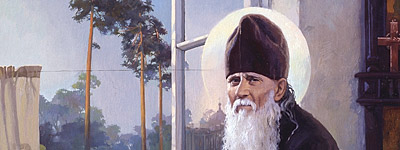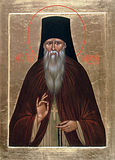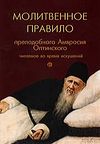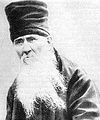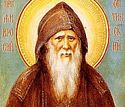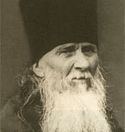 Martyrs Eulampius and Eulampia and 200 martyrs with them, at Nicomedia (303-311).
Martyrs Eulampius and Eulampia and 200 martyrs with them, at Nicomedia (303-311).  St. Ambrose, elder, of Optina Monastery (1891). St. Innocent, bishop of Penza (1819).
St. Ambrose, elder, of Optina Monastery (1891). St. Innocent, bishop of Penza (1819).
Martyr Theotecnus of Antioch (3rd-4th c.). St. Bassian of Constantinople (ca. 458). St. Theophilus the Confessor, of Bulgaria (716). Blessed Andrew of Totma (Vologda), fool-for-Christ (1673). Synaxis of the Saints of Volhynia: Sts. Stephen (1094) bishops of Vladimir in Volhynia; and Amphilochius (1122), St. Yaropolk-Peter, prince of Vladimir in Volhynia (1086); St. Theodore (in monasticism Theodosius) of the Kiev Caves, prince of Ostrog in Volhynia (1483); St. Juliana, princess of Olshansk (ca. 1540); St. Job, abbot and wonderworker of Pochaev (1651); and Hieromartyr Macarius of Kanev, archimandrite, of Obruch and Pinsk (1678). New Hieromartyr Theodore (Pozdeyevsky), archbishop of Volokolamsk (1937).
Zographou Icon of the Most Holy Theotokos “Of the Akathist.”
St. Pinytus, bishop of Knossos on Crete (2nd c.). Martyrs of the Theban Legion, along the Rhine: Sts. Cassius and Florentius, at Bonn; Sts. Gereon and companions, at Cologne; and Sts. Victor and companions, at Xanten (Germany) (ca. 287). St. Paulinus, archbishop of York (644). St. Agilbert, bishop of Paris (ca. 680). Martyrdom by the Latins of the 26 Martyrs of Zographou Monastery on Mt. Athos: Abbot Thomas, Monks Barsanuphius, Cyril, Micah, Simon, Hilarion, Job, James, Cyprian, Sabbas, James, Martinian, Cosmas, Sergius, Paul, Menas, Ioasaph, Ioannicius, Anthony, Euthymius, Dometian, and Parthenius, and four laymen (1284).
Repose of Schemamonk Theodore, desert-dweller of Valaam (1834).
Monday. [Phil. 4:10-23; Luke 7:36-50]
How could it be that although Simon the
Pharisee reveres the Lord and invites Him over, he is
scandalized when he sees that He shows favour toward a
sinful woman and permits her to approach Him? Why does he
think to himself, “If He were a prophet,” and
so forth? Because he had busied himself with the
entertaining, and therefore ignored a sensible
understanding of how God does things. These two realms,
worldly and spiritual, are completely completely different
characteristics and laws. Our mind all the while judges
its own preoccupations according to the laws of those
preoccupations. According to worldly thinking, one must
not have contact with an obviously sinful woman. Simon
judges thus, forgetting that repentance makes everyone
pure and puts sinners on one level with the righteous. He
thinks that the sinful woman should not be there, and that
if the Saviour does not chase her away, it is probably
because He does not know who she is. Another thought
immediately follows this one: If He does not know that she
is sinful, then what kind of prophet is He? He did not say
this in words, but only thought it, although there was no
change in his appearance outwardly. But the Lord saw his
heart and corrected him accordingly. He suggested to him
that sinners also have a place beside Him, and that the
sinful woman who united with Him in her heart, revered Him
more than did Simon, who honoured Him with nothing but
food. Externals lead a person to a feeling of
self-righteousness unpleasant to the Lord, while inner
things always preserve a feeling of unworthiness before
the face of the omniscient Lord.


![]() Martyrs Eulampius and Eulampia and 200 martyrs with them, at Nicomedia (303-311).
Martyrs Eulampius and Eulampia and 200 martyrs with them, at Nicomedia (303-311). ![]() St. Ambrose, elder, of Optina Monastery (1891). St. Innocent, bishop of Penza (1819).
St. Ambrose, elder, of Optina Monastery (1891). St. Innocent, bishop of Penza (1819). 

